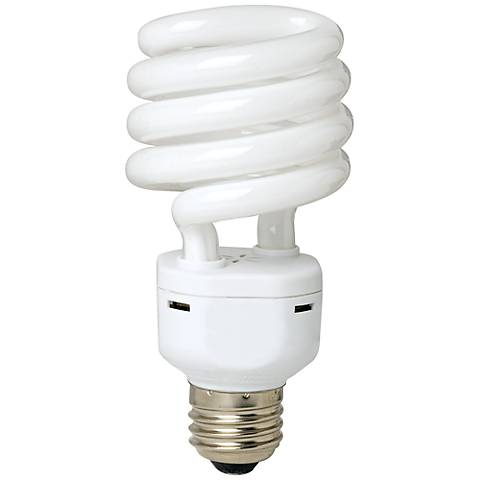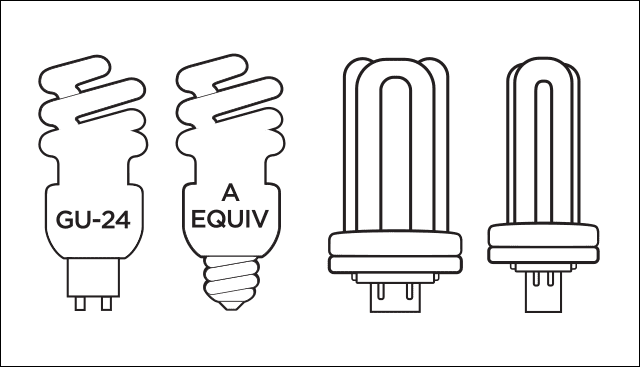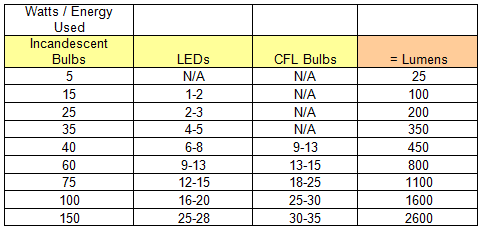How a CFL Light Bulb Works

A quick survey of the home lighting landscape proves just how fast technology marches forward. Over time, we have learned that there are certain drawbacks and limitations when using standard incandescent bulbs, opening the door for newer, more efficient, and longer-lasting light bulb designs. One of the most popular designs is the CFL bulb.
First unveiled at the 1939 New York World’s Fair, this light bulb type moves beyond traditional construction and reconceptualizes how home lighting can work. And today, the CFL boasts far greater energy efficiency than its wire-burning cousin, emitting much more light per watt of energy and far less heat to boot.
In this article, we’ll give a brief breakdown of how CFL bulbs operate, where you can use them in your home, how you should properly dispose of them, and more. Here are the facts.
What Does CFL Stand For?
CFL stands for compact fluorescent light or compact fluorescent lamp. This refers to the shape of the bulb (tight, spiral, folded) and the type of process that powers the bulb (fluorescence).
While compact fluorescent light bulbs are rapidly being replaced by LED technology, it remains an easy way to bring energy efficiency to your home.

What Are the Main Advantages of CFL Bulbs?
Efficiency: CFL type bulbs use about 1/4 of the energy of a comparable incandescent bulb offering similar visible light output.
Longevity: Lasting up to 10 times longer than a regular light bulb, a CFL can save you lots of annoying bulb changes and burned fingers.
Expense: A CFL bulb does have a higher initial cost than an incandescent bulb. But it’s a case of the tortoise winning the race; over the lifetime of a CFL bulb it will save enough energy to pay for itself 10 times over.
Quality of Light: Gone are the days of flickering, humming fluorescents giving off a creepy pale glow. Nowadays, CFL light bulbs are capable of producing quality light that rivals the best incandescent bulbs.
Versatility: Coming in all shapes and sizes, the average compact fluorescent light bulb can be used almost anywhere you would use a regular incandescent bulb. Table lamps, ceiling fixtures, torchiere floor lamps, wall sconces, outdoor lighting, track lighting, recessed fixtures, and more can benefit from CFL technology.
Pollution: Since most of our electricity comes from coal-burning plants, using a CFL reduces air and water pollution. Replacing just one incandescent bulb with a CFL can keep 1/2 ton of CO2 out of our atmosphere over the CFL bulb’s lifetime.

What is the Difference Between CFL and Incandescent Bulbs?
The biggest difference between standard bulbs and CFLs comes down to how they produce light. This has far-reaching effects that affect bulb life, energy usage, and more.
Incandescent bulbs create light by passing electric current through a small wire, or filament. The electrical resistance of the filament causes it to heat up and glow. The catch is, only about 10% of the electricity used in this process is emitted as light. The other 90% is given off as heat. While this heat can be desirable in certain applications (heating lamps and botanical grow lamps, for example), it is usually just a wasteful byproduct of incandescent inefficiency.
On the other hand, CFL bulbs contain a mix of gases that are held in a tube. Instead of a wire filament, electric current is driven through this tube to create ultraviolet (UV) light. Since we can’t see UV light, a special phosphor coating is applied to the glass to convert it to visible illumination we can see. So why is this innovative process important? Since the CFL does not rely on heat to produce its light, it is far more energy efficient than standard bulbs. Plus, different phosphor coatings can be applied to CFLs to customize the quality of the light output.
What is the Difference Between CFL and LED Bulbs?
LED light bulbs are more energy-efficient (and more expensive) than CFL bulbs. Here’s why.
As explained above, CFL bulbs drive electrical currents through a gaseous tube in order to create UV light. But LED bulbs drive electrical currents through a specialized semiconductor material, which releases photons to create light. This difference in materials is important in the process of powering these bulbs.
As a result, LED bulbs are longer-lasting and more energy efficient than their CFL counterparts. However, CFL bulbs are cheaper on average. If you’re looking for greater energy efficiency at a lower price point, then CFL bulbs remain a good choice. Both LED and CFL bulbs are more efficient than regular incandescent bulbs.

Do CFL Bulbs Have a Warm-Up Time?
Yes, CFL light bulbs generally have a warm-up period, but modern designs have shortened that time considerably.
In order to precisely control the electricity that travels through the gas inside the bulb, CFLs use a device called a ballast. In the past, fluorescent lights have been associated with flickering, humming, and slow starting. (Think about large gymnasium lights, for example.) This was largely due to the use of older, now outdated, electromagnetic ballasts.
Today, this issue is no longer a problem. Modern CFL bulbs use advanced electronic ballasts which do not tend to produce these performance anomalies. Advancements in technology have dramatically reduced warm-up time, and the new ballasts are capable of regulating the electric current to product steady, reliable light. Once lit, these bulbs use about 70% less energy than incandescent bulbs.
So, as you can, CFLs are a brilliant alternative to standard bulbs that make it possible for you to reduce your energy usage without compromising great home lighting.
Do CFL Bulbs Have Mercury?
Yes, CFL bulbs contain mercury, but only trace amounts that are generally considered safe. On average, a CFL bulb contains about four milligrams of mercury – barely enough to cover the tip of a ballpoint pen! To compare, an older thermometer holds about 500 milligrams on average. In other words, though CFLs are indeed light bulbs with mercury, the amount of mercury within is negligible.
No mercury is released when a CFL bulb is in use, and, as lighting technology improves, the amount of mercury inside continues to decrease rapidly. So be assured and feel safe about using CFL light bulbs with mercury in your home.
Worried about the environmental effects of mercury? According to the EPA, the proper use of CFL bulbs actually reduces the amount of mercury emissions because of their significant energy savings. When these efficient lighting solutions are implemented, the need for electricity is cut down, which means your bulbs last longer and power plants are forced to burn less coal (a major culprit in mercury emissions).
How Do I Properly Dispose of CFL Bulbs?
Because CFLs contain trace amounts on mercury, they require a little extra consideration when getting rid of old bulbs. As noted above, the amount of mercury in a CFL bulb is pretty minimal. Even so, in order to protect the environment, the EPA recommends recycling old bulbs through your waste collection agency and/or local hardware supply store. Contact them to see if they offer a disposal program, or to learn if your state has additional policies that require recycling instead of disposal.
For more information on recycling CFL bulbs, check out the official EPA guidelines here.
You can also check out our full selection of CFL bulbs here.
You’ve learned all there is to know about this light bulb type. Now, sit back and enjoy your energy savings!
More Light Bulb Ideas and Advice
Lumens to Watts: the Key to Buying Replacement Light Bulbs
Light Bulb Identifier and Finder Guide
How an Incandescent Bulb Works
